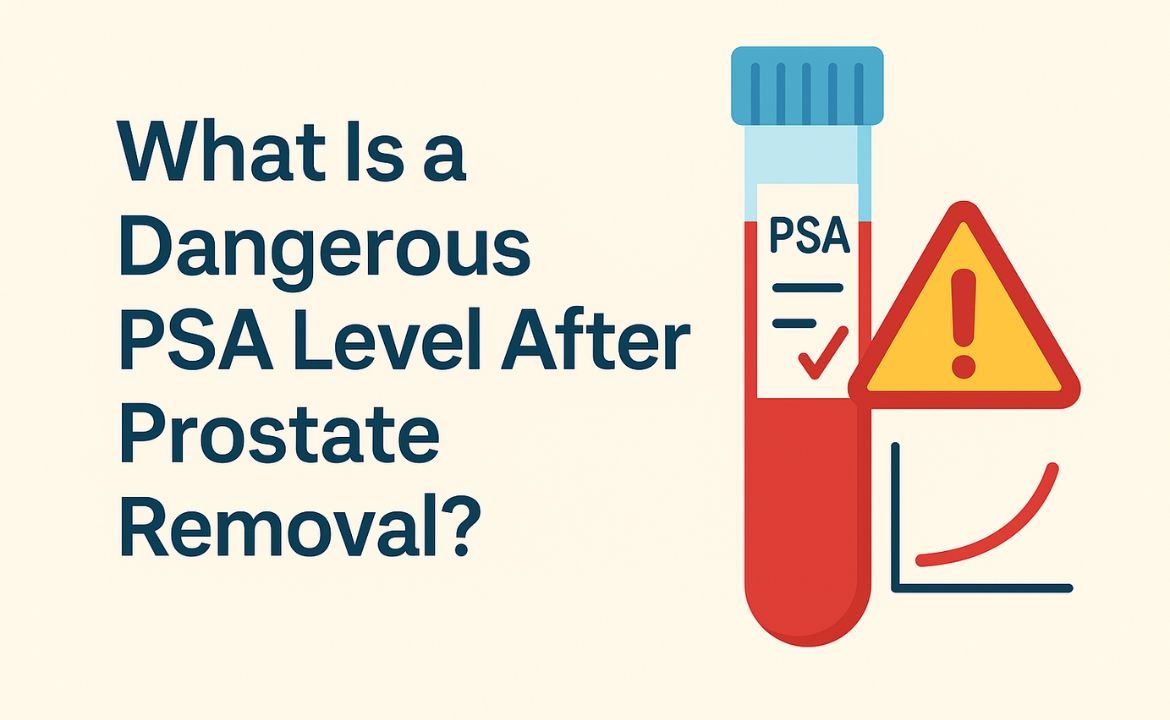After undergoing prostate removal (prostatectomy), patients often wonder about the significance of PSA levels in their follow-up care. Prostate-specific antigen (PSA) is a protein produced by both normal and malignant prostate cells. Since the prostate gland is removed during surgery, PSA levels should ideally drop to undetectable levels. When PSA begins to rise again post-surgery, it may indicate a recurrence of prostate cancer. This article explores what constitutes a dangerous PSA level after prostate removal, what patients should monitor, and when to seek further medical evaluation.
Understanding PSA After Prostatectomy
Following a radical prostatectomy, PSA levels are expected to fall to undetectable levels — usually less than 0.1 ng/mL. Since the source of PSA production is removed, any detectable PSA might signal remaining prostate cells, either benign or cancerous.
What Is Considered a Dangerous PSA Level?
A PSA level that rises above 0.2 ng/mL on two consecutive tests is often the benchmark for biochemical recurrence. This doesn’t automatically mean that cancer has returned or spread, but it’s a red flag that requires further investigation.
Key thresholds to watch:
- 0.1 ng/mL or less: Typically considered undetectable and normal after prostatectomy.
- 0.2 ng/mL: Commonly used as the recurrence threshold.
- 0.4 ng/mL or higher: Suggests a greater likelihood of recurrence and possible need for additional treatment.
Factors That Influence PSA Levels
Several variables can impact PSA readings post-surgery:
- Surgical technique and thoroughness
Residual benign prostate tissue can sometimes remain and produce low PSA levels. - Aggressiveness of the cancer
High-grade cancers may recur sooner and lead to faster rises in PSA. - Timing of the PSA test
PSA should be measured 6–8 weeks after surgery for a baseline. Subsequent tests are usually done every 3–6 months initially.
What Happens If PSA Rises After Surgery?
If PSA begins to rise:
- Repeat Testing: A second test confirms the trend.
- Imaging Scans: Tools like PSMA PET scans may help locate recurrence.
- Salvage Therapy: Radiation therapy or hormone therapy might be recommended to control recurrence.
Early detection of PSA recurrence allows for more treatment options and better outcomes.
Monitoring Schedule After Prostate Removal
- First 2 years: Every 3–6 months
- Years 3–5: Every 6–12 months
- After 5 years: Annually, if no recurrence
Staying on top of these follow-ups is vital in catching any dangerous changes early.
Conclusion
A dangerous PSA level after prostate removal is typically defined as 0.2 ng/mL or higher, confirmed on at least two tests. This may indicate cancer recurrence and should not be ignored. Regular PSA monitoring is essential for early detection and timely intervention. If you notice a rising trend in your PSA levels after surgery, consult your urologist or oncologist promptly to explore appropriate next steps.
